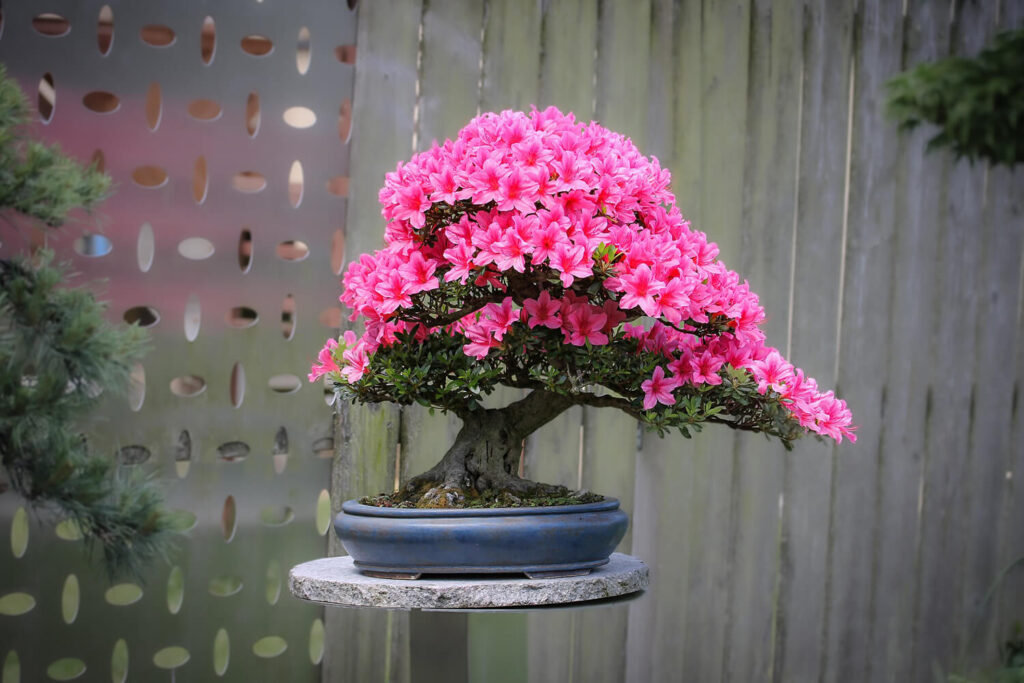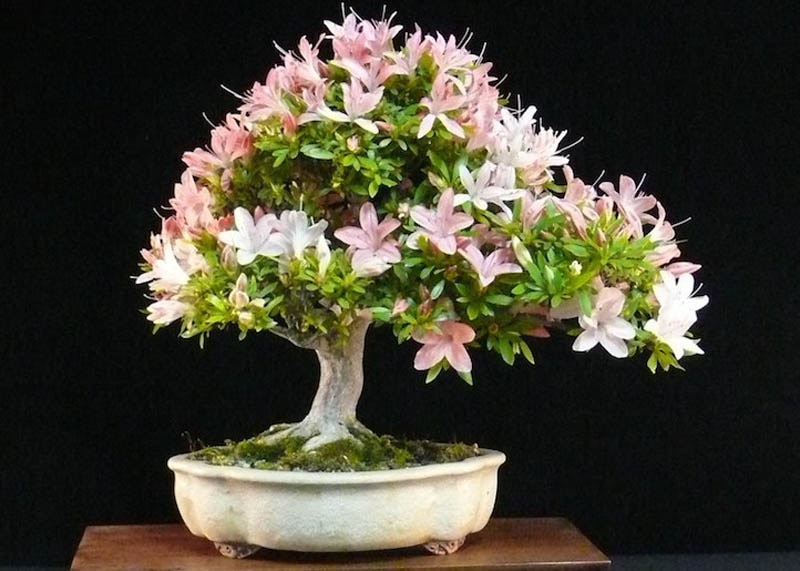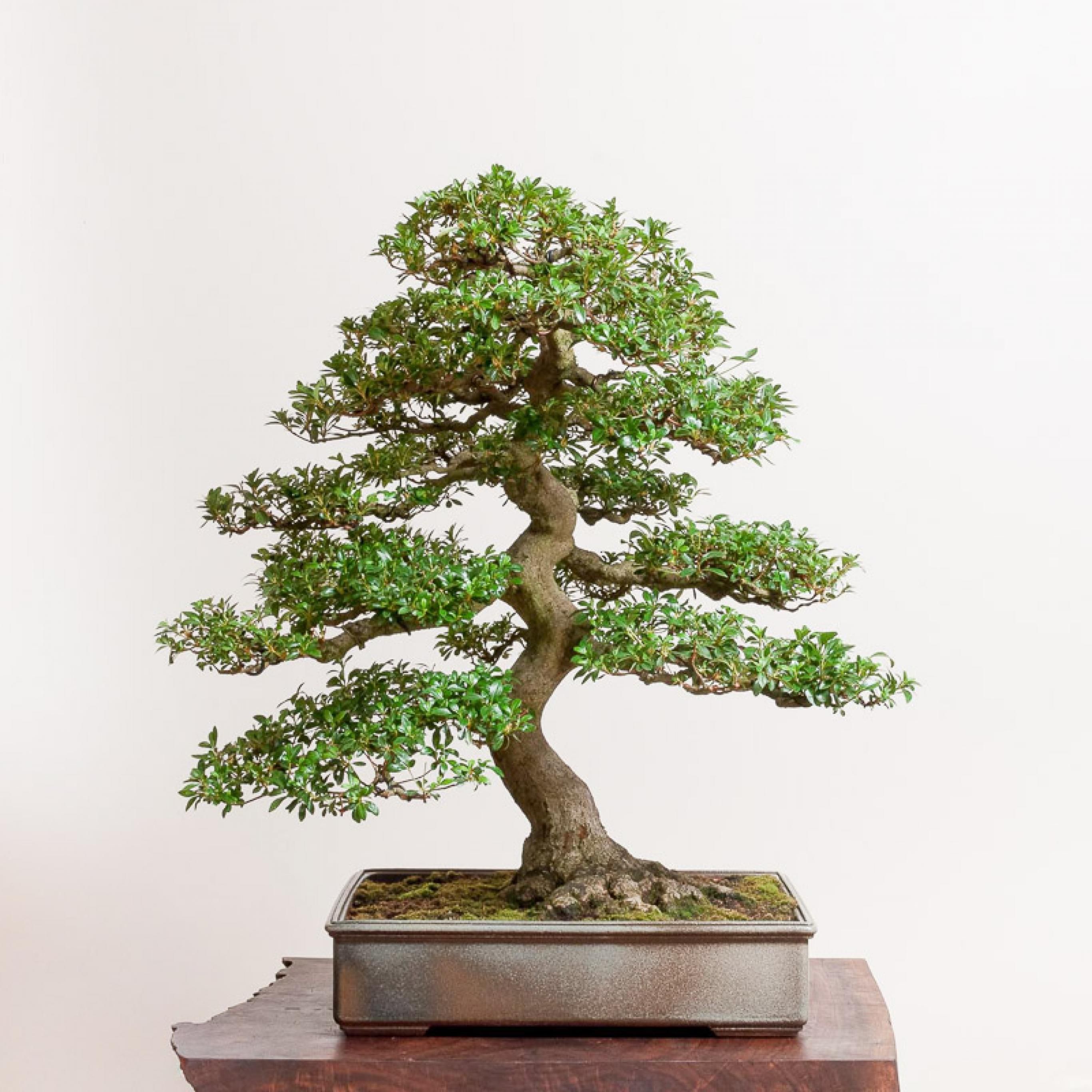Satsuki Azalea bonsai trees need bright light and consistent watering. Prune regularly to maintain their shape and health.
Satsuki Azalea bonsai trees are renowned for their vibrant blooms and intricate beauty. These miniature marvels require specific care to thrive. Ensure they receive ample sunlight, preferably morning sun, for at least six hours daily. Water them consistently, keeping the soil moist but not waterlogged.
Pruning is essential to maintain their shape and encourage new growth. Use well-draining soil and fertilize monthly during the growing season. Protect the tree from extreme temperatures and pests. With proper care, your Satsuki Azalea bonsai will flourish and become a stunning focal point. Their unique beauty and manageable size make them a favorite among bonsai enthusiasts.
Introduction To Satsuki Azalea Bonsai
The Satsuki Azalea Bonsai is popular among bonsai enthusiasts. It is known for its vibrant flowers. These flowers bloom in late spring. This bonsai has a compact structure. It is perfect for small spaces. Its leaves are small and dark green. This makes it look appealing all year round.
Unique Features
Satsuki Azalea Bonsai has many unique features. One feature is its colorful flowers. These flowers can be red, pink, white, or even mixed colors. Another feature is its ability to bloom twice a year. It also has a twisted trunk which adds to its beauty. This bonsai can be shaped easily. This makes it great for beginners.
Popular Varieties
| Variety Name | Flower Color | Blooming Season |
|---|---|---|
| Kozan | Red | Late Spring |
| Gyoten | Pink | Late Spring |
| Higasa | White | Early Summer |
| Nikko | Mixed Colors | Late Spring |
Ideal Growing Conditions
Satsuki Azalea bonsai trees thrive in mild climates. They enjoy cool summers and mild winters. These trees need protection from extreme heat and freezing temperatures. Placing them in a partially shaded area helps. Indoor environments with indirect sunlight work well too. Always avoid drafty areas or direct air conditioning.
Well-draining soil is essential for Satsuki Azalea bonsai trees. Use a mix of pine bark and sand. The soil should retain moisture but not stay waterlogged. Good soil aeration helps the roots breathe. Avoid using clay-based soils as they hold too much water. Regularly check the soil’s pH level; it should be slightly acidic.
Watering Techniques
The Satsuki Azalea Bonsai needs water often. Dry soil is not good for it. Check the soil daily. Water the tree when the soil feels dry.
Watering too much can hurt the tree. Too much water can cause root rot. Aim for a balance. Keep the soil moist but not soggy.
Clean water is best for the Satsuki Azalea Bonsai. Tap water can be used if it’s not too hard. Hard water has a lot of minerals.
Rainwater is a great choice. It is free from chemicals. Filtered water is also good. Avoid water with chlorine.
Fertilization Tips
Use organic fertilizers for the best results. Slow-release fertilizers provide steady nutrients. Fish emulsion is a good choice. Bone meal is also beneficial. Avoid chemical fertilizers. These can harm your bonsai tree. Always read the label instructions. Over-fertilizing can damage the roots.
Fertilize your Satsuki Azalea once a month. Start in early spring. Continue through late summer. Stop fertilizing in the fall. This helps the tree prepare for winter. Water the tree before fertilizing. This prevents root burn. Follow a consistent schedule for healthy growth.
Pruning And Shaping
Prune your Satsuki Azalea bonsai in early spring. New growth appears during this time. This is the best time to shape the tree. Avoid pruning during late summer or fall.
Use clean, sharp tools for pruning. Scissors and shears are ideal. Make small cuts to avoid damage. Trim branches to maintain the tree’s shape. Always trim just above a node or leaf.

Credit: hookedonbonsai.com
Pest And Disease Control
Aphids and spider mites often attack Satsuki Azalea bonsai trees. These pests can damage leaves and flowers. Aphids are small, green insects that suck sap from the plant. Spider mites create webs and cause leaves to turn yellow. Scale insects are another common pest. They appear as small, brown bumps on the stems.
Regularly inspect your bonsai tree for signs of pests. Maintain proper hygiene by removing dead leaves and debris. Spray water on leaves to dislodge pests. Use insecticidal soap for severe infestations. Healthy trees are less likely to suffer from pests. Ensure your tree has proper light and nutrients.
Repotting Guidelines
Repotting a Satsuki Azalea Bonsai Tree ensures healthy growth and vibrant blooms. Choose well-draining soil and prune roots carefully.
When To Repot
Repot Satsuki Azalea bonsai every 2-3 years. Do this in early spring. The tree should be out of its dormancy. Choose a suitable pot with good drainage. Make sure the pot is slightly larger than the root ball.
Step-by-step Process
First, remove the tree from its current pot. Gently shake off old soil from the roots. Trim back any long or damaged roots. Place a layer of fresh soil in the new pot. Position the tree in the center of the pot. Add more soil around the roots, pressing firmly. Water the tree thoroughly after repotting.

Credit: www.bonsaiempire.com
Seasonal Care Routines
Spring is a crucial time for Satsuki Azalea Bonsai. Pruning helps maintain its shape. Water the tree regularly, but avoid overwatering. Fertilize with a balanced, slow-release fertilizer. Repotting should be done if needed. Ensure the pot has good drainage. Place the bonsai in a sunny spot. Protect it from late frosts. Pest control is essential; check for insects.
Winter can be harsh for Satsuki Azalea Bonsai. Move the tree indoors or to a sheltered area. Ensure it gets enough light. Water sparingly, but do not let it dry out. Avoid fertilizing during winter months. Use mulch to protect the roots. Check the tree regularly for any signs of stress. Keep it away from heaters to prevent drying out.

Credit: bonsaimirai.com
Conclusion
Caring for a Satsuki Azalea Bonsai tree can be rewarding. Focus on proper watering, pruning, and sunlight exposure. Regular care ensures vibrant blooms and healthy growth. By following these tips, your bonsai will thrive and bring beauty to your space.
Enjoy the process and watch your bonsai flourish.

